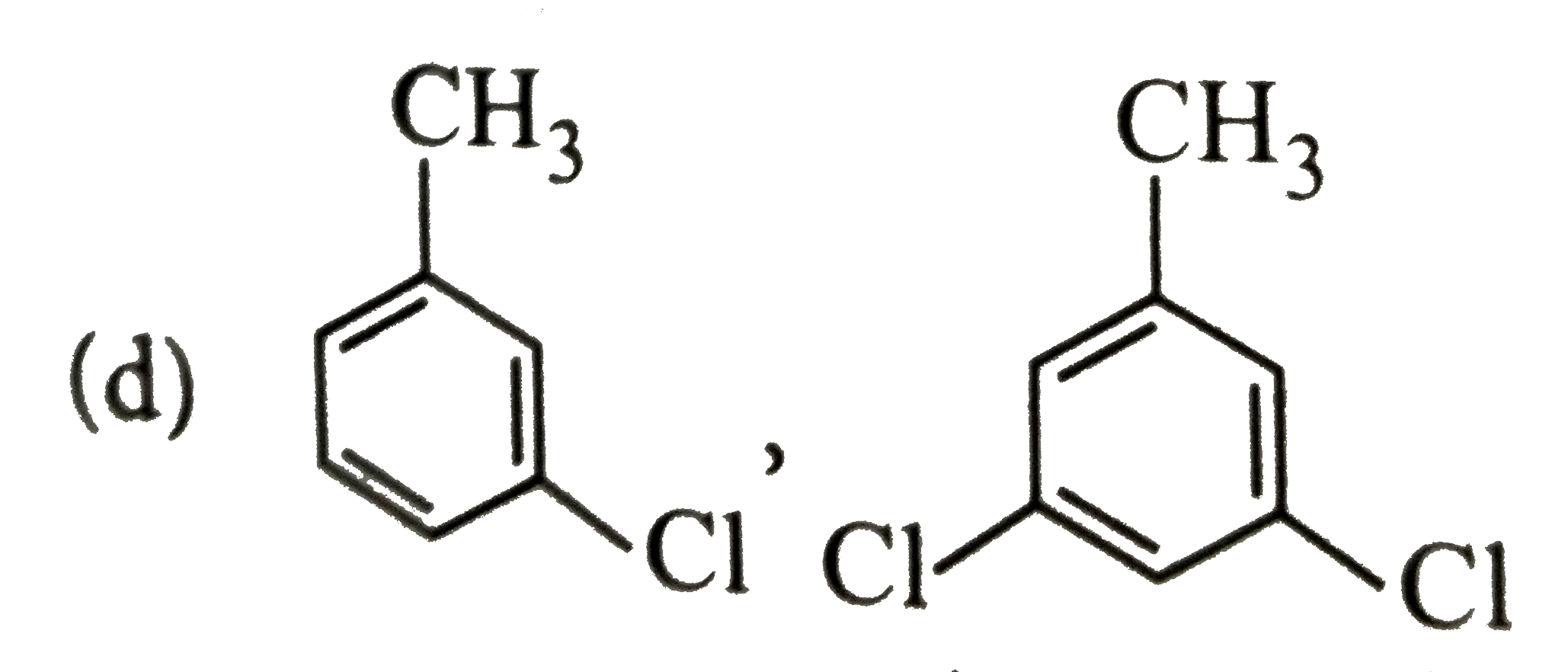Compound 'A' with molecular formula C4H9Br is treated with aq. KOH solution. The rate of this reaction depends upon the concentration of the compound 'A' only. When another optically active isomer 'B' of this compound was treated with aq. KOH solution, the rate of reaction was found to be dependent on concentration of compound and KOH both.
Write down the structural formula of both compounds 'A' and 'B'.
(i) Alkyl halides on treatment with aq. KOH give alcohols as the major product.
C4H9Br+KOH(aq)→C4H9OH+KBr
In case of compound .A. rate of reaction depends upon the concentration of .A. only, the reaction proceeds via SN mechanism. Since the SN mechanism is favoured by 3° alkyl halides, .A. should be

In case of compound .B. which is an optically active isomer of .A., rate of reaction depends upon the concentration of .B. as well as KOH. Therefore, the reaction occurs by SNP mechanism which is favoured by 1∘and2∘ alkyl halides.
Thus .B. can be

However, out of these two, only 2-bromobutene is optically active.
The compound .B. is
CH3CH2−Br∣CH−CH32-Bromobutane(B)
Topper's Solved these Questions
Similar Questions
Compound 'A' with molecular formula C4H9Br is treated with aq. KOH solution. The rate of this reaction depends upon the the concentration of the compounds 'A' only. When another optically active isomer 'B' of this compound was treated with aq. KOH solution, the rate of reaction was found to be dependent on concentration of compound and KOH both.
(i) Write down the structural formula of both compounds 'A' and 'B'.
(ii) Out of these two compounds, which one will be converted to the product with inverted configuration.
View SolutionCompound 'A' with molecular formula C4H9Br is treated with aq. KOH solution. The rate of this reaction depends upon the the concentration of the compounds 'A' only. When another optically active isomer 'B' of this compound was treated with aq. KOH solution, the rate of reaction was found to be dependent on concentration of compound and KOH both.
(i) Write down the structural formula of both compounds 'A' and 'B'.
(ii) Out of these two compounds, which one will be converted to the product with inverted configuration.
View Solution
Knowledge Check
A compound X with molecular formula C7H8 is treated with Cl2 in presence of FeCl3. Which of the following compounds are formed during the reaction?
A B
B C
C D
D
Which product is formed when tht, compound

is treated with concentrated aqueous KOH solution?A B
B C
C D
D
Which product is formed when tht, compound

is treated with concentrated aqueous KOH solution?A B
B C
C D
D
Compound 'A' with molecular formula C4H9Br is treated with aq. KOH solution. The rate of this reaction depends upon the concentration of the compound 'A' only. When another optically active isomer 'B' of this compound was treated with aq. KOH solution, the rate of reaction was found to be dependent on concentration of compound and KOH both.
Write down the structural formula of both compounds 'A' and 'B'.
View SolutionCompound 'A' with molecular formula C4H9Br is treated with aq. KOH solution. The rate of this reaction depends upon the the concentration of the compounds 'A' only. When another optically active isomer 'B' of this compound was treated with aq. KOH solution, the rate of reaction was found to be dependent on concentration of compound and KOH both.
(i) Write down the structural formula of both compounds 'A' and 'B'.
(ii) Out of these two compounds, which one will be converted to the product with inverted configuration.
View SolutionWhich product is formed when the compound is treated with concentrated aqueous KOH solution ?
View SolutionThe compound that is most reactive with alcoholic KOH is
View SolutionWhich product is formed when tht, compound

is treated with concentrated aqueous KOH solution?
View Solution
